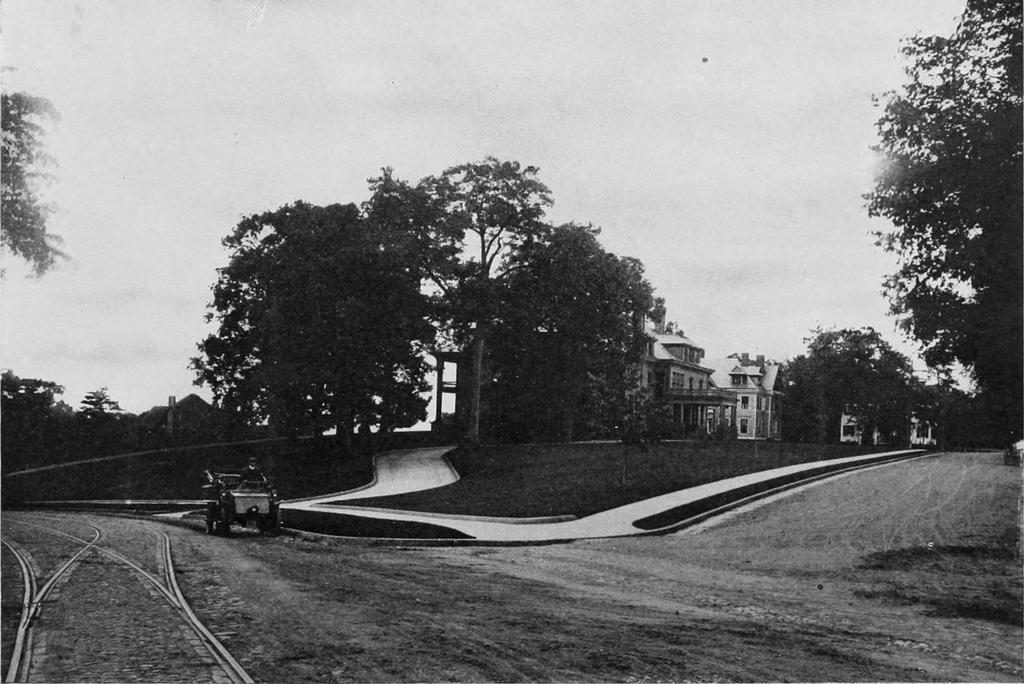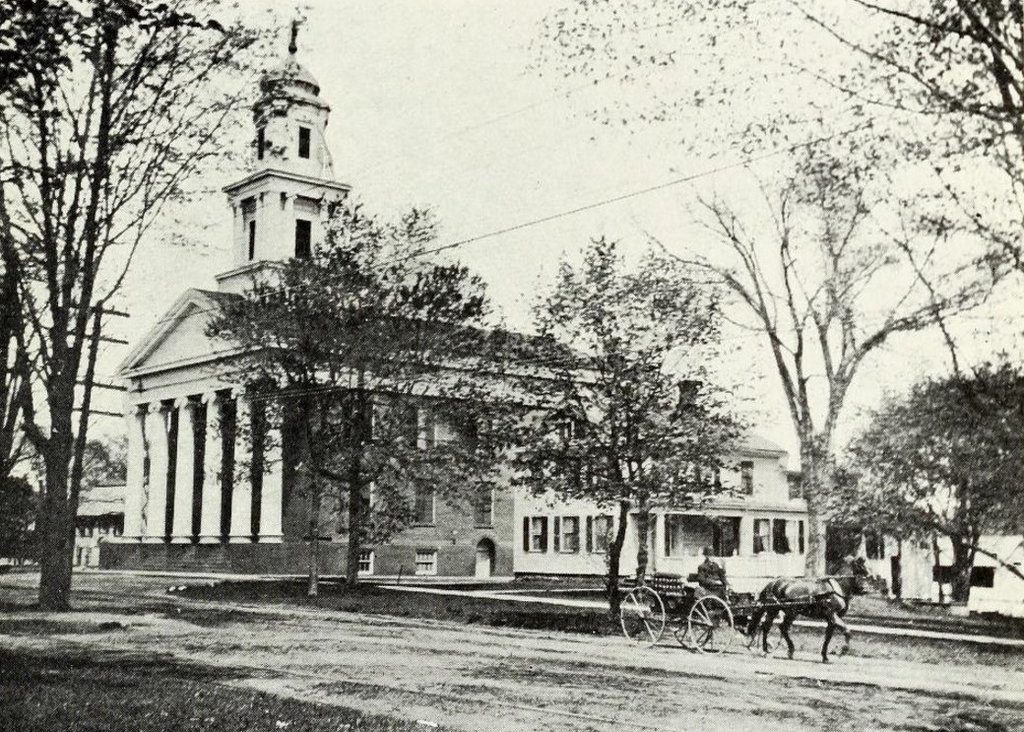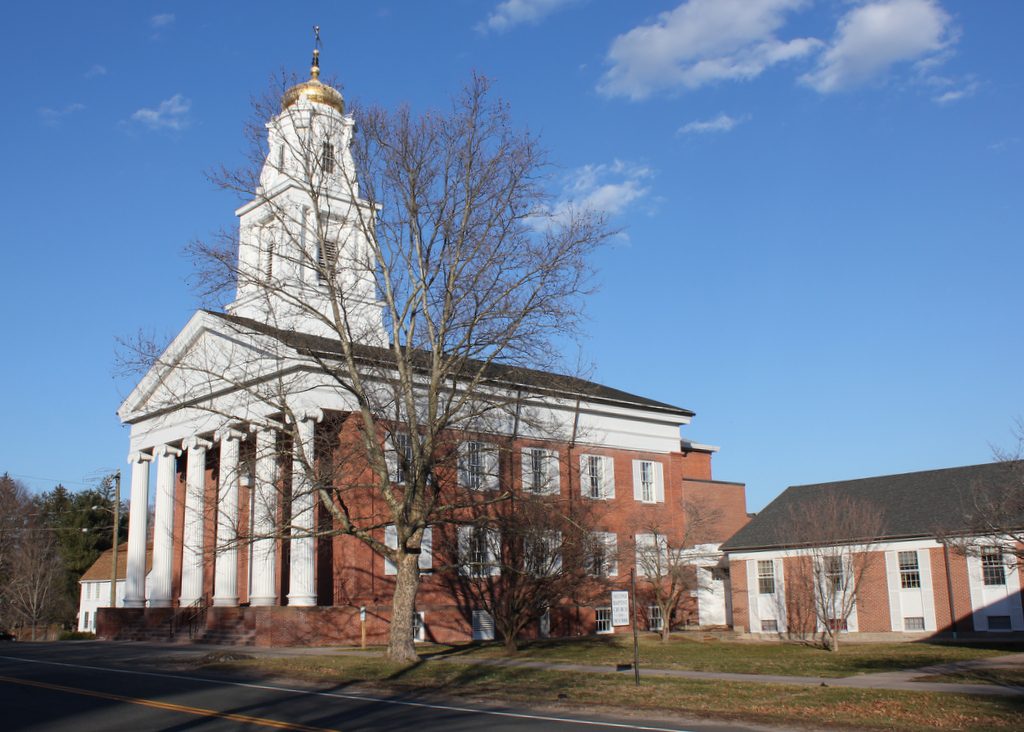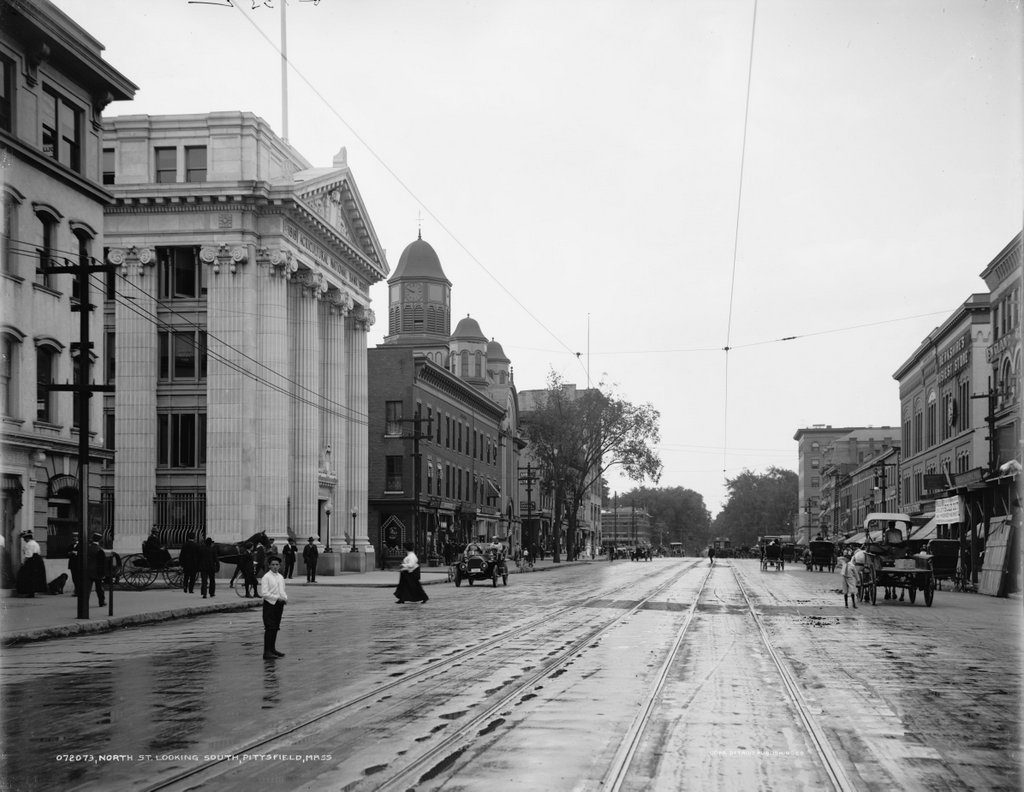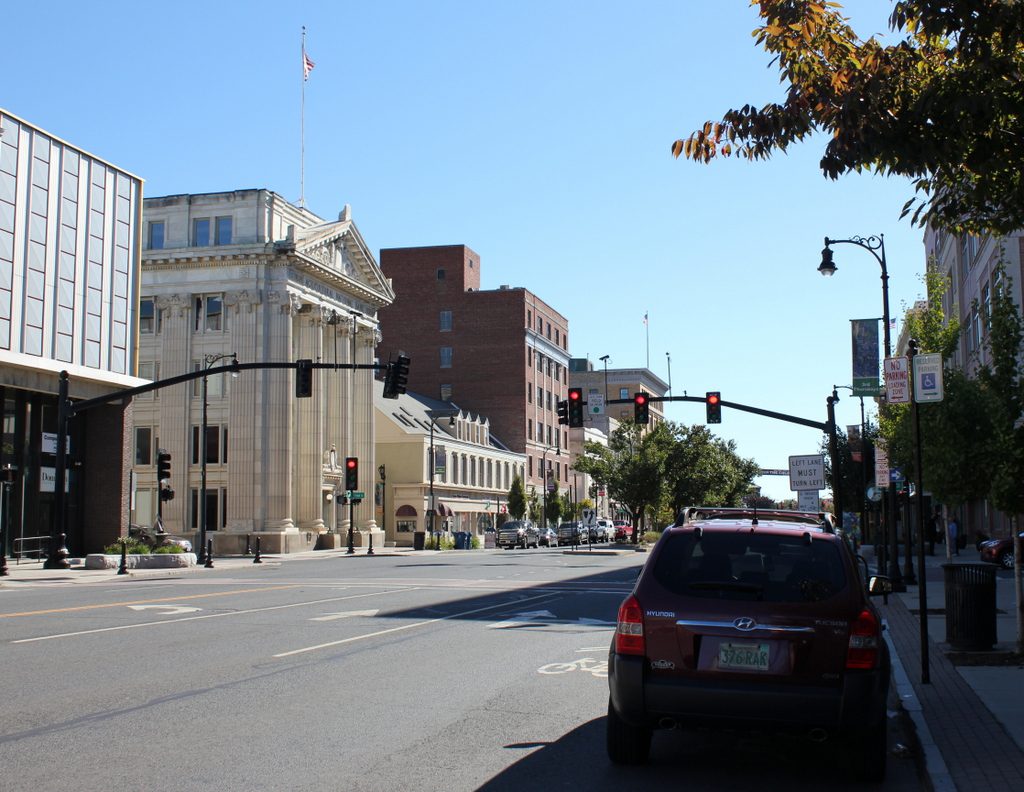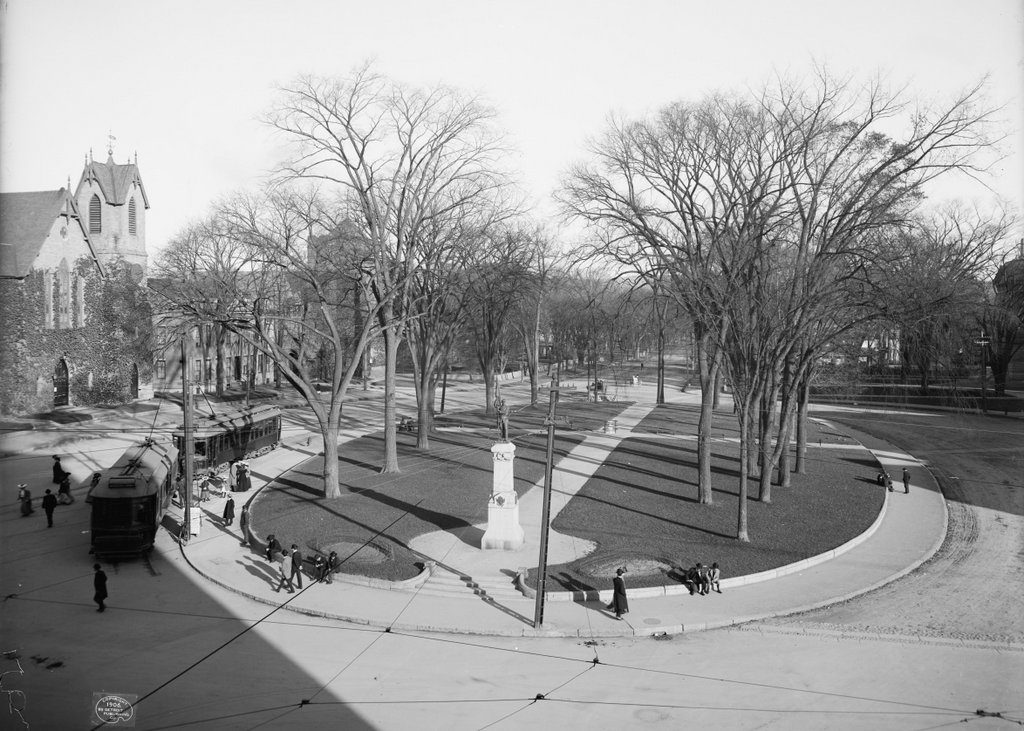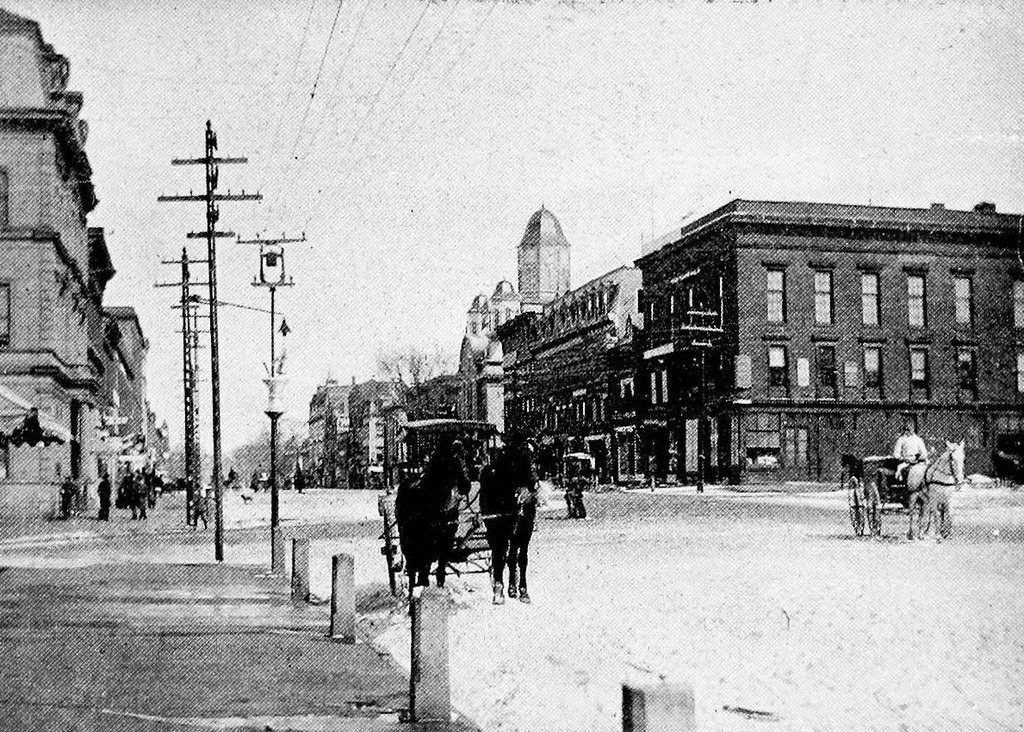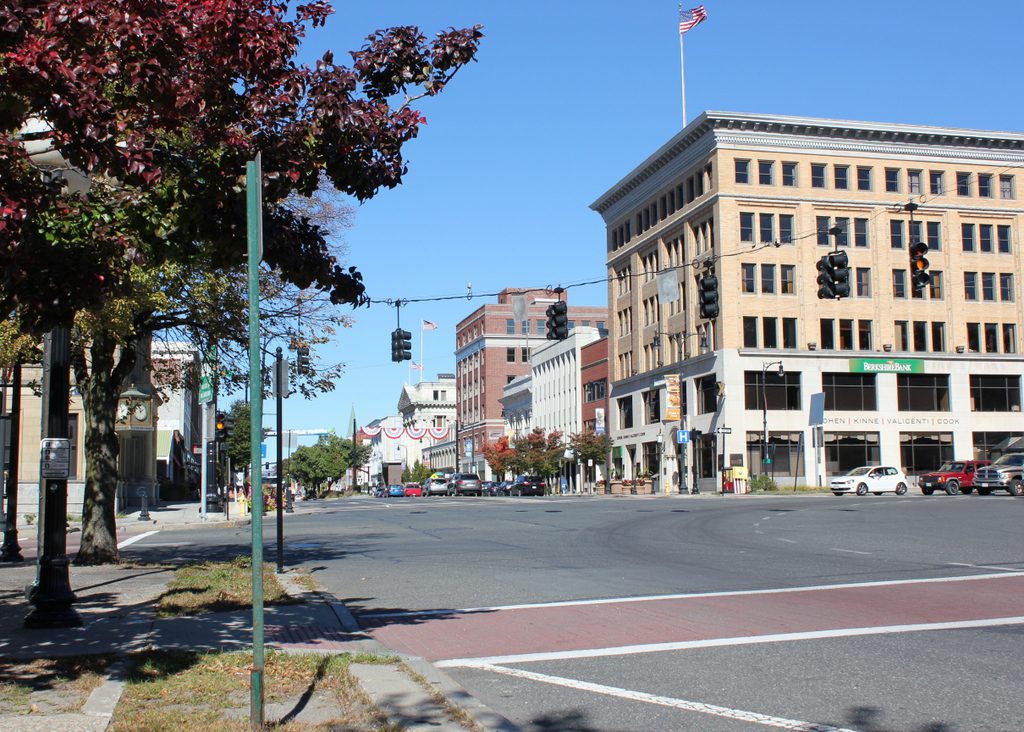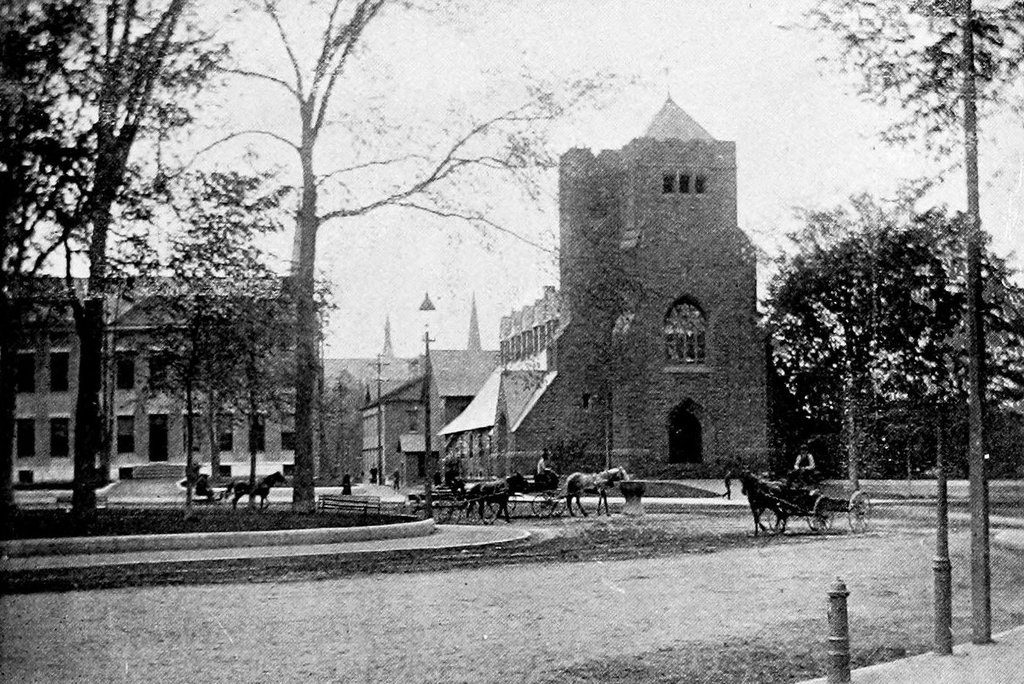The corner of Central Street and Madison Avenue in Springfield, with the Goodhue House in the distance, around 1905. Image from Springfield, Present and Prospective (1905).
The scene in 2017:
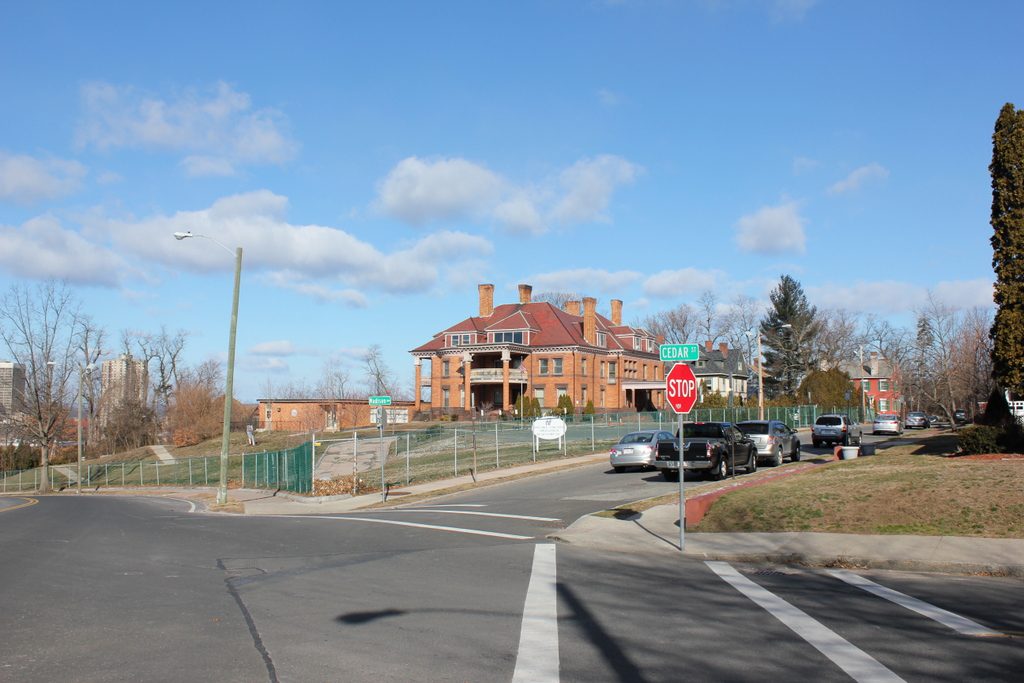
This neighborhood of Springfield, variously referred to as Maple Hill and Ames Hill, was the city’s most fashionable residential area of the city in the 19th century. Here on Central Street, this site was once the home of Henry Sterns, a merchant who built his house here in 1827. By the late 1860s, though, his property was subdivided and two new streets, Sterns Terrace and Madison Avenue, were built here. The old house was moved to the back of the lot around 1870, and can be seen in the distant right of both photos.
The original location of the house later became the site of a new mansion, which was completed in 1894 for Charles L. Goodhue. He was a contractor and businessman who, among other things, served as president of Chicopee National Bank and the Knox Automobile Company, and he was still living here when the first photo was taken. His house was among the largest ever built in the city, and offered commanding views of downtown Springfield from atop the hill.
By the 1940s, the mansion was owned by Mayor Roger L. Putnam, but in the second half of the 20th century it was owned by several different schools, before being sold to the Holyoke-Chicopee-Springfield Head Start in 1997. Despite a 1950s classroom wing on the left side of the house, its exterior is otherwise unaltered from the first photo. Similarly, the other houses on Madison Avenue have also survived, and the entire street is part of the Maple Hill Local Historic District. The Goodhue House, however, is also part of the Ames/Crescent Hill Historic District, which is listed on the National Register of Historic Places.

